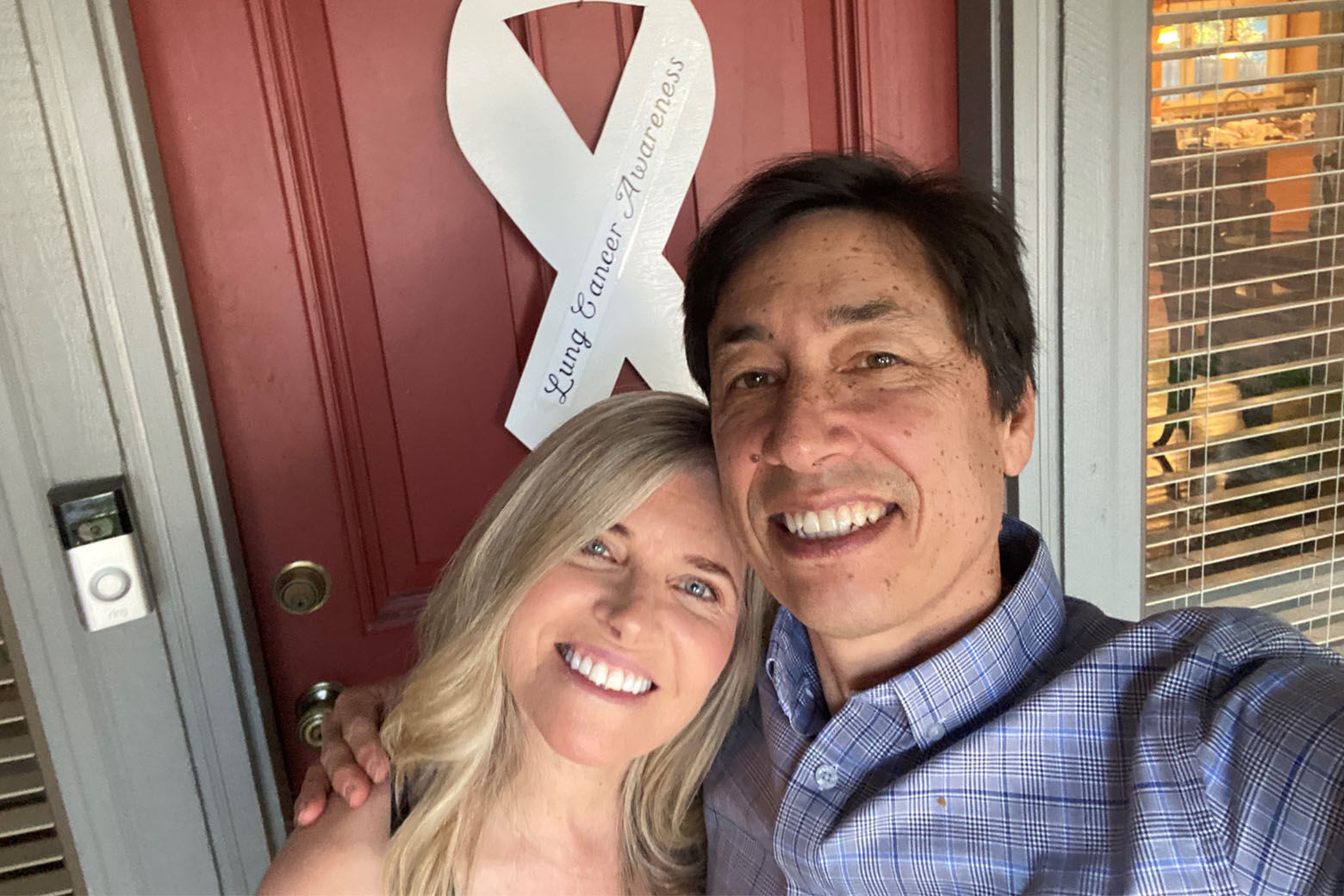Lung cancer is by far the leading cause of cancer deaths in the United States — in part, because many people don’t find out they have it until it’s already spread.
Heidi Nafman-Onda was one of those people.
A fitness trainer in her 50s, she was diagnosed with Stage 3a lung cancer in 2018. She and her husband, Pierre, started the White Ribbon Project, to advocate for more lung cancer screening, increased funding for research of new treatments and to eliminate the stigma of lung cancer.
“One of the fastest growing demographics is younger people who have no smoking history,” said Nafman-Onda.
Her lung cancer was diagnosed accidentally.
In 2018, she had sought a CT scan for an ovarian cyst. “My doctor said, ‘Your ovary looks fine, but there’s a mass in the upper left lobe of your lung, and some swollen lymph nodes in the middle of your chest.”

“I was shocked,” she told WTOP. “I’m a fitness trainer, and I was doing heavy-duty cardio every day on a stair mill for an hour, and never got short of breath — no cough.”
Pierre, a recently retired internal medicine primary care doctor, said it’s not surprising that his wife had no symptoms of locally advanced lung cancer when she was diagnosed.
“In the vast majority of cases, lung tumors will not cause any pain,” said Pierre. “It’s really not until the advanced stages of disease that people can get symptoms like pain or shortness of breath.”
Despite the danger and prevalence of lung cancer, most people will never get screened.
Why do few people get screened for lung cancer?
“The screening test for lung cancer is a low radiation CT scan,” said Pierre.
In 2021, the U.S. Preventive Services Task Force expanded its screening recommendations for lung cancer. It now urges screening for anyone ages 50 to 80 who has a “20 pack-year smoking history,” meaning they smoked one pack a day for 20 years; two packs a day for 10 years; they currently smoke; or they have quit in the past 15 years.
However, very few current or people with a history of smoking have availed themselves of the screening.
“Some people feel the stigma is playing a role,” in not getting screened, said Pierre. “Some people feel somehow this is something that they did to themselves.”
The current rise in lung cancer diagnoses among people who have never smoked shows that’s not accurate, said Nafman-Onda. “Anyone with lungs can get lung cancer.”
In addition, some people with persistent coughs or shortness of breath, likely avoided screening, because they were fearful of learning they had advanced cancer.
Not surprising, said Pierre.
“The message has been, for years, that if you get lung cancer, there’s really nothing you can do,” he said. “But if you get diagnosed with metastatic lung cancer, there’s still a high likelihood that there are very effective treatments.”
New treatments offer hope, longer lives
When Nafman-Onda was originally diagnosed, in 2018, “I was given a grim prognosis of maybe four to six months, and told to get my affairs in order.”
However, her outlooked changed dramatically, when she found an oncologist who was experienced in modern cancer research and treatment.
“Here I am, four years and three months later, benefiting from new immunotherapy that had been FDA-approved about a month prior to my diagnosis,” she said.
Pierre said the number of new cancer treatments is in the midst of a surge.
“There’s been an exponential number of new therapies to treat different types of lung cancer, since lung cancer is not one disease,” he said.
The two main types of lung cancer include non-small cell lung cancer, or NSCLC, which include adenocarcinoma, squamous cell carcinoma, and large cell carcinoma. More than eight in 10 lung cancer cases are NSCLC.
Approximately 10% lung cancer cases are small-cell lung cancer — SCLC is particularly aggressive.
Pierre said new FDA-approved treatments, as well as ongoing clinical trials, offer hope for patients.
“Things like precision medicine, which means that the medicines are targeted specifically to certain types of tumors and mutation types,” he said. The narrow focus of targeted therapies can help minimize side effects.
“The chemotherapy has improved, the radiation has improved, surgical interventions have improved,” said Pierre.
Nafman-Onda can attest to the reduction of side effects.
“I had to get your standard chemo and radiation at the same time,” she said. “I never felt nauseous, never got sick, I didn’t lose my hair.”
About 236,000 people are diagnosed every year with lung cancer, according to the American Lung Association. By building wooden white ribbons, the couple says they’re trying to unite those impacted by the disease.
By destigmatizing the discussion of lung cancer, they hope patients will feel empowered to discuss it with their doctors, and push for a lung cancer screening even without a history of smoking.
“If you do present with a cough, know to advocate for yourself with your physician: ‘I want you to dig deeper on this’ — let’s just not keep brushing it off for months, with different allergy medicines. Let’s do the CT scan.”
Editor’s note: In November 2022, WTOP’s Neal Augenstein was diagnosed with stage IV EGFR-mutated non-small cell lung cancer. He reports his targeted one-pill-a-day therapy is going well.








